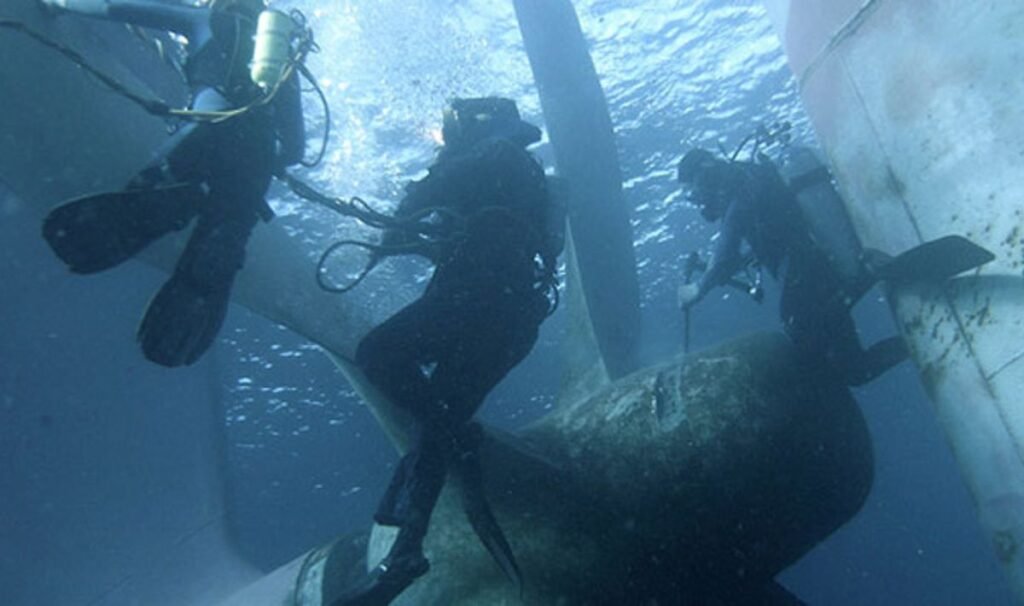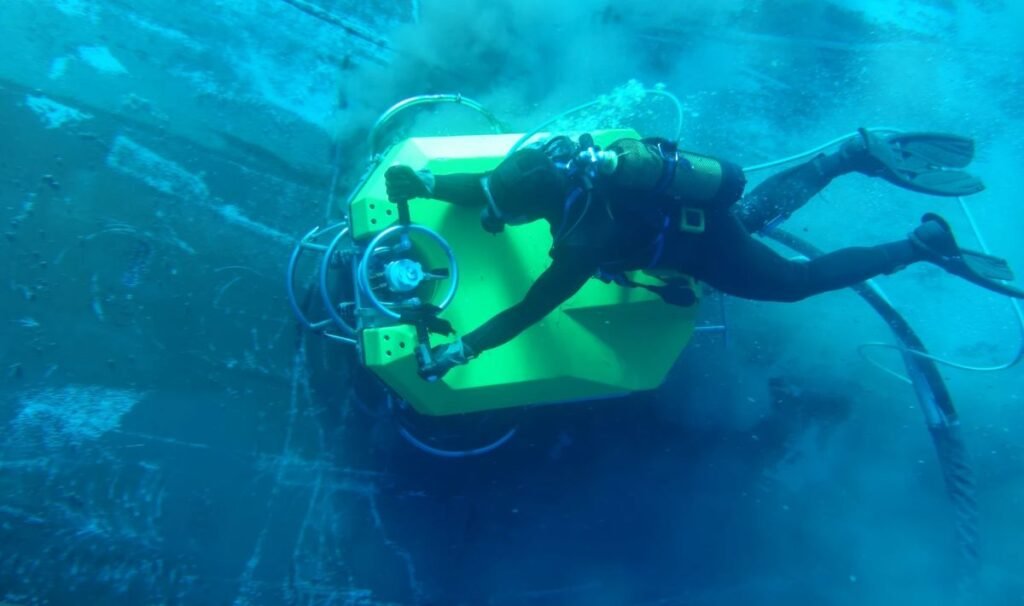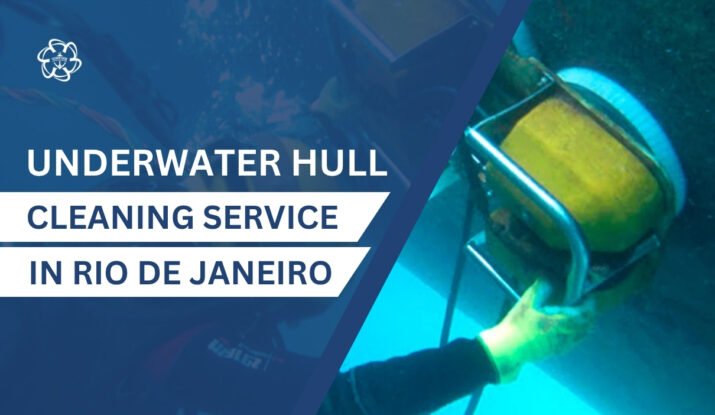Underwater Hull Cleaning in Rio de Janeiro: The Essential Guide for Shipowners
Close your eyes for a moment. Picture your vessel navigating Rio de Janeiro’s iconic coastline, slicing through the shimmering waters of Guanabara Bay with almost effortless grace. Now open your eyes to reality—without regular cleaning, the bottom of that ship is likely dragging a garden of barnacles, algae, and maybe even the troublesome sun coral. If you want efficiency, fewer surprises, and true compliance, it’s time to talk about underwater hull cleaning in Rio de Janeiro.
Why is Vital Underwater Hull Cleaning in Rio de Janeiro
Let’s get straight to the point: Rio de Janeiro’s busy shipping lanes, mixed with tropical marine life and port activity, create a perfect storm for biofouling. Barnacles, algae, and even invasive species zero in on your hull the moment you drop anchor or slow down in the bay. The longer your vessel goes without cleaning, the more serious the drag and the cost. For anyone in the shipping or offshore business here, underwater hull cleaning in Rio de Janeiro isn’t just routine maintenance; it’s mission-critical.
The Underwater Environment of Rio de Janeiro: Unique Challenges
What sets Rio apart from other ports? It’s the blend of oceanic and river influences, heavy vessel traffic, and a warm, nutrient-rich environment. Guanabara Bay, for example, practically invites marine organisms to thrive, making hull cleaning a frequent—often urgent—job for every vessel that spends time here.
Biofouling Woes: What Grows on Your Hull in Guanabara Bay?
If you could peek beneath the waterline after a few months in Rio, you’d see:
- Barnacles: As tough as concrete, these critters are masters of sticking.
- Green and brown algae: A slimy coat that quickly multiplies.
- Tube worms and mussels: Clog intakes and sideline sensitive gear.
- Sun coral (Tubastraea spp.): An invasive, vibrant coral that spreads aggressively and requires specialized removal protocols.
Unchecked, these fouling organisms slow the ship’s movement, increase fuel consumption, and even damage hull coatings or propulsion systems.

How is underwater hull cleaning carried out in Rio de Janeiro?
Rio has a strong network of specialized service providers, from small local outfits to internationally certified diving companies. Here’s how they typically operate:
Diving Teams, Tools, and Technology
Most cleaning jobs are hands-on. Specially trained divers, often carrying years of expertise, use a mix of manual brushes, scrapers, and mechanical rotating brushes. In some cases, teams also deploy high-tech underwater video or ROVs to inspect hard-to-reach areas and ensure no spot is missed.
Manual vs. Mechanical Hull Cleaning
- Manual cleaning: Best for detail work or delicate areas, divers use hand tools to gently scrape and scrub away biofouling.
- Mechanical cleaning: For larger vessels or heavier growth, mechanical rotating brushes and hydraulic tools make short work of barnacle colonies and stubborn layers.
The cleaning standard is often set by the client and can range from a simple “fouling touch-up” to a full polish that rivals a shipyard finish.
Sun Coral: A Formidable Foe for Vessels
A unique challenge in Rio’s waters is the explosive growth of invasive sun coral. This coral forms dense, bright colonies on hulls and gear. Removing it isn’t just a matter of aesthetics or speed—new Brazilian regulations require its controlled removal to prevent ecological disaster. Underwater Hull cleaning in Rio de Janeiro for sun coral is usually manual, high-risk work, relying on experienced dive teams and detailed planning. It’s a time-consuming job but critical for compliance and sustainable operations.
Core Benefits of Regular Underwater Hull Cleaning in Rio de Janeiro
Let’s break down why smart shipowners never skip this step.
Savings: Fuel, Time, and Reduced Maintenance
A smooth, clean hull cuts water resistance. That means:
- Up to 20% fuel savings year-round.
- Fewer engine strains and less frequent dry-docking.
- Longer-lasting anti-fouling coatings, saving you thousands in repairs and repaints.
Legal and Environmental Compliance of Underwater Hull Cleaning in Rio de Janeiro
Brazil recently tightened rules on biofouling, especially concerning exotic species. Regular, documented underwater hull cleaning in Rio de Janeiro not only keeps your ship in peak form but also protects you from fines, delays, and regulatory headaches.
Best Timing: When Should You Schedule Cleaning?
Don’t wait for visible slime or a spike in fuel bills. Leading operators’ schedule:
- Routine cleanings: Every 6 to 12 months, adjusted for vessel type and activity.
- Pre-inspection or certification: Before surveys by maritime authorities.
- After long stays in port or slow transit, Extended idle time means faster growth.
A Closer Look at Service Providers in Rio de Janeiro
From multinational companies to local, family-run dive outfits, Rio is full of options. Most reputable companies offer:
Top Services: Inspection, Cleaning, Repairs, Reporting
- In-water surveys with HD video and photos for precise before-and-after evidence.
- Comprehensive hull and propeller cleaning using both manual and mechanical techniques.
- Minor repairs: Welding, cutting, anode replacements, and patching for unexpected discoveries during cleaning.
- Biofouling documentation: Compliance-friendly reporting and regulatory paperwork.
Choosing the Right Partner Underwater Hull Cleaning in Rio de Janeiro
Grab your checklist:
- Certification: Ensure they’re recognized by major classification societies and comply with Brazilian maritime/environmental standards, including IMO guidelines.
- Experience: Look for years of local operation and a record of handling your vessel’s type (tankers, platforms, cargo, etc.).
- Safety: Ask about diver training, equipment, and insurance.
- Technology: Opt for teams using modern equipment, ROVs, and high-res imagery for reporting.
- Sun coral expertise: This is a must for operations in Guanabara Bay or known risk areas.
Step-by-Step: What to Expect During the Service
Assessment, Removal, Verification
- Initial survey: Divers or ROVs assess fouling, check for invasive species, and identify sensitive areas.
- Cleaning: Manual and/or mechanical tools remove all fouling, starting from the waterline and progressing downward.
- Special procedures: If sun coral is present, strict containment and removal strategies prevent further spread.
- Inspection and reporting: Post-clean video and documentation for the client, class societies, and authorities.

Overcoming the Obstacles: Real-life Challenges & Pro Solutions
Underwater work in Rio is not for the faint-hearted:
- Poor visibility: Silt, runoff, and high marine traffic can challenge even experienced divers.
- Currents and safety: Guanabara Bay and coastal waters present tricky conditions—local teams use years of know-how to keep things safe.
- Invasive species management: Special regulations on sun coral mean some jobs require extra paperwork, containment, and disposal steps.
- Unexpected hull damage: Cleaning sometimes reveals hidden corrosion or damage—trustworthy companies are equipped for immediate repairs or sealing.
Maximizing the Return on Your Cleaning Investment
Here’s how you can get more for your money and effort:
- Stick to a cleaning schedule: Prevention is always cheaper than a crisis.
- Bundle inspections and cleaning: Often, you’ll get a better price and a fuller picture of hull health.
- Keep documentation: Good records smooth regulatory inspections and can lower insurance costs.
- Ask for detailed reports: Most teams provide HD video or photo evidence—use this to track hull condition over time.
Conclusion: Smooth Sailing Starts Below the Waterline
Beneath the waves of Rio de Janeiro, the fate of your ship’s efficiency, safety, and compliance is decided. Regular underwater hull cleaning in Rio de Janeiro is more than good housekeeping—it’s a strategic, regulatory, and financial necessity. Whether you’re operating a cargo fleet, an offshore platform, or even a luxury yacht, expert cleaning keeps you moving ahead and minimizes hard-to-see risks. In a city where marine challenges are as dynamic as the scenery, making hull cleaning a priority is the anchor that ensures every journey starts at full speed.
FAQ:
Q1. How often should I schedule underwater hull cleaning in Rio de Janeiro?
For most commercial ships, a standard interval of 6 to 12 months is observed, but high-traffic or idle vessels may require more frequent cleaning to meet regulatory and efficiency targets.


